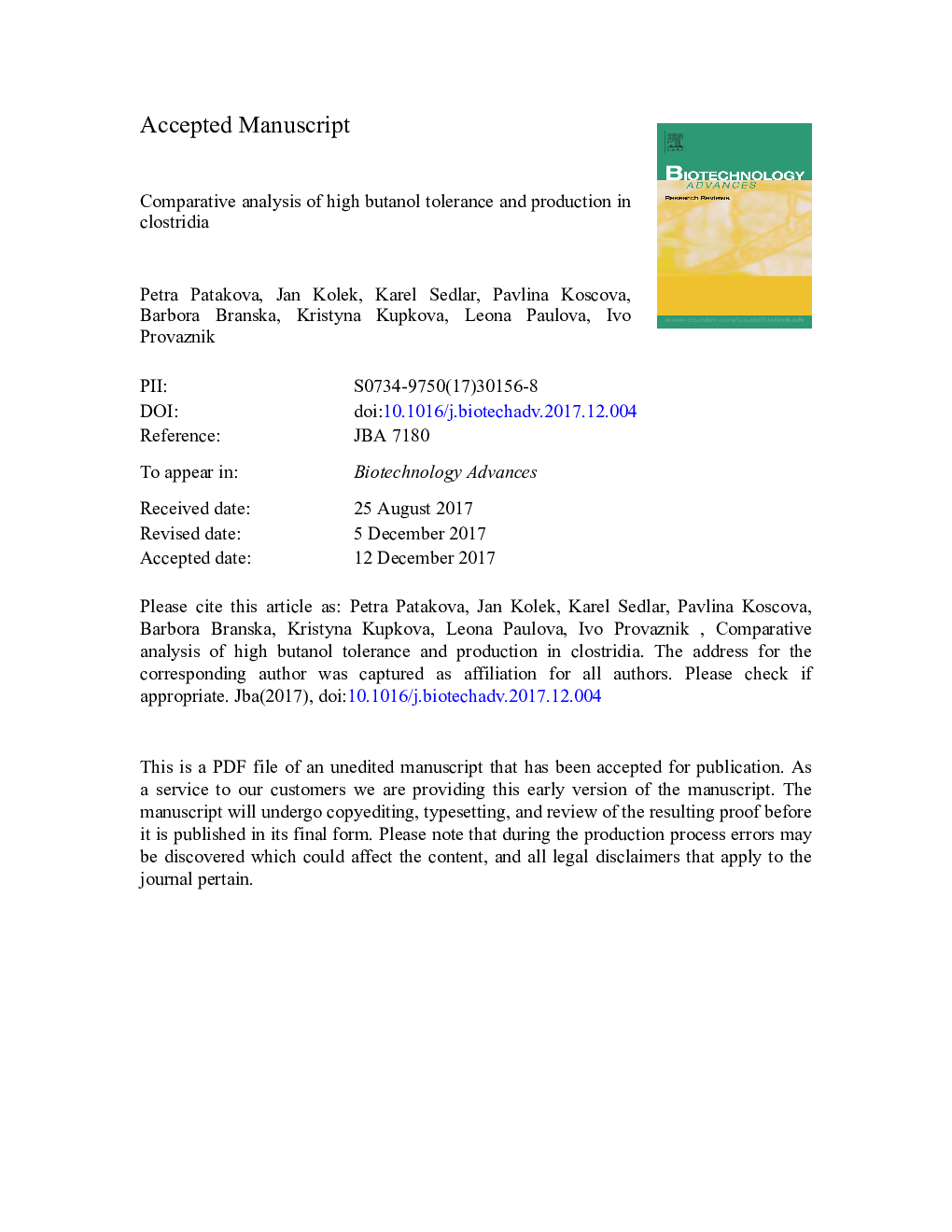| Article ID | Journal | Published Year | Pages | File Type |
|---|---|---|---|---|
| 6486640 | Biotechnology Advances | 2018 | 51 Pages |
Abstract
2016, was the 100Â years anniversary from launching of the first industrial acetone-butanol-ethanol (ABE) microbial production process. Despite this long period and also revival of scientific interest in this fermentative process over the last 20Â years, solventogenic clostridia, mainly Clostridium acetobutylicum, Clostridium beijerinckii, Clostridium saccharoperbutylacetonicum and Clostridium pasteurianum, still have most of their secrets. One such poorly understood mechanism is butanol tolerance, which seems to be one of the most significant bottlenecks obstructing industrial exploitation of the process because the maximum achievable butanol concentration is only about 21Â g/L. This review describes all the known cellular responses elicited by butanol, such as modifications of cell membrane and cell wall, formation of stress proteins, extrusion of butanol by efflux pumps, response of regulatory pathways, and also maps both random and targeted mutations resulting in high butanol production phenotypes. As progress in the field is inseparably associated with emerging methods, enabling a deeper understanding of butanol tolerance and production, progress in these methods, including genome mining, RNA sequencing and constructing of genome scale models are also reviewed. In conclusion, a comparative analysis of both phenomena is presented and a theoretical relationship is described between butanol tolerance/high production and common features including efflux pump formation/activity, stress protein production, membrane modifications and biofilm growth.
Keywords
SMNN-methyl-N′-nitro-N-nitroso-guanidineM4CGGDCSMRTMTaseNTGANIHspEMSFBANGSABE5-methyl cytosinem5Cm6Aethidium bromideFlux balance analysisButanol toleranceABE fermentationRestriction modificationNext generation sequencingButanol productionRexTranscription factorFlow cytometryTranscriptomicsMethyl transferaseGenome miningaverage nucleotide identityTranscription unitHeat shock proteinPropidium iodideGenreGSMClostridium
Related Topics
Physical Sciences and Engineering
Chemical Engineering
Bioengineering
Authors
Petra Patakova, Jan Kolek, Karel Sedlar, Pavlina Koscova, Barbora Branska, Kristyna Kupkova, Leona Paulova, Ivo Provaznik,
